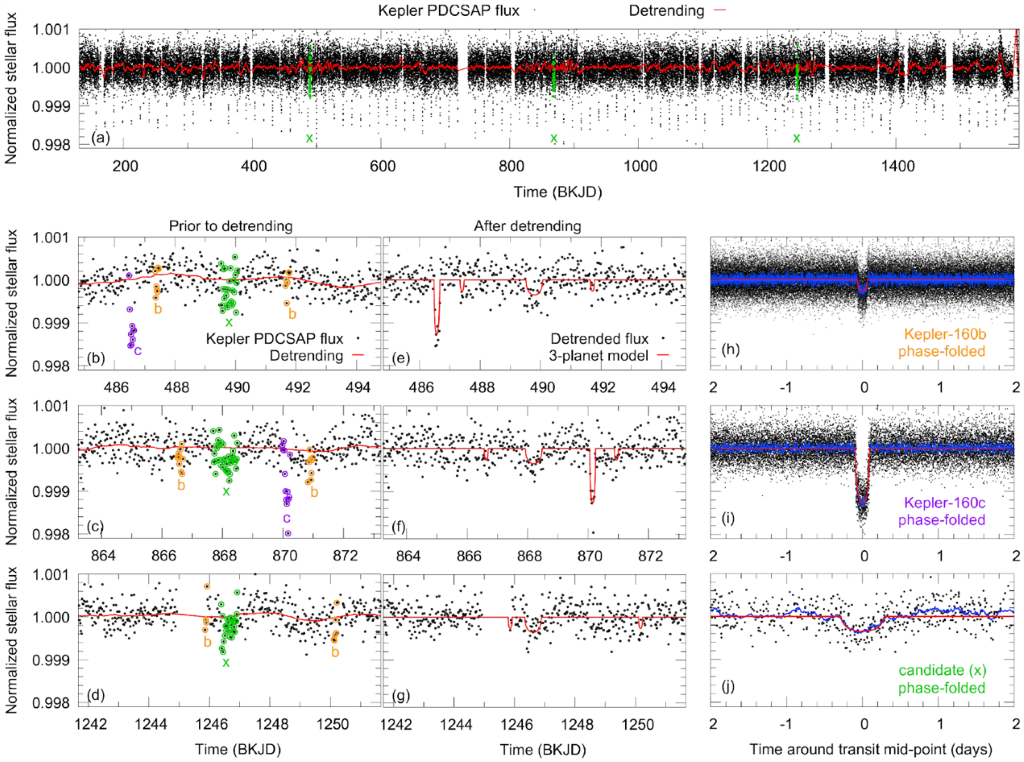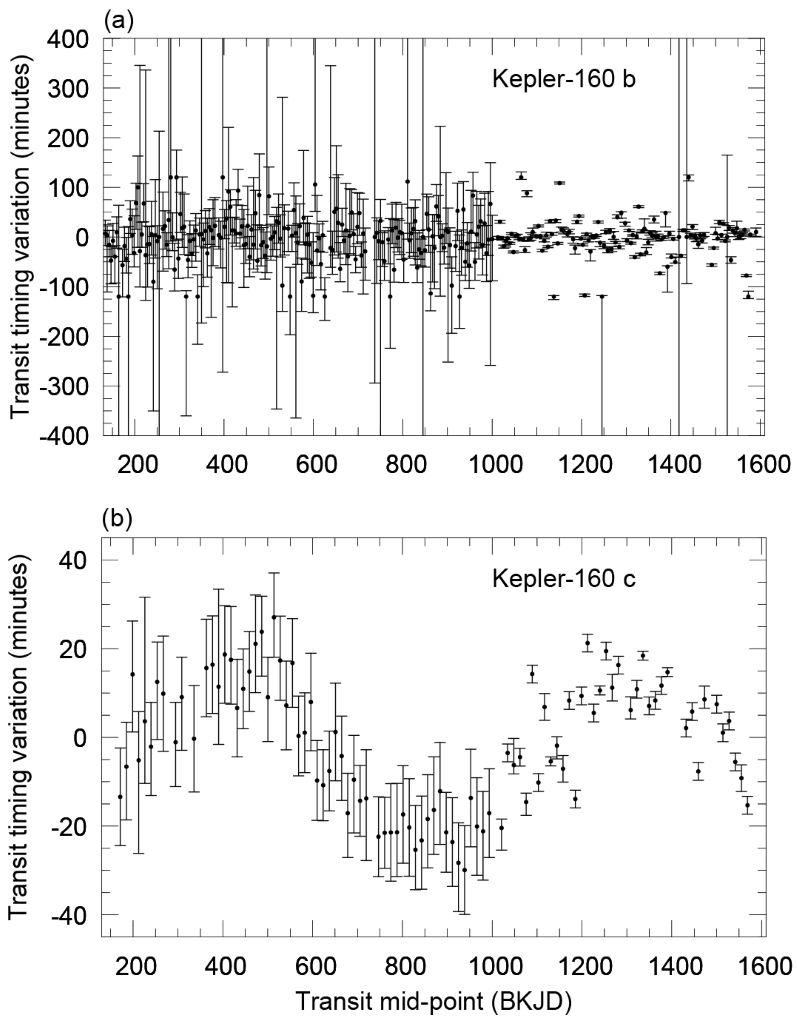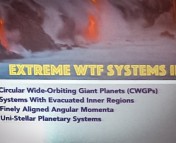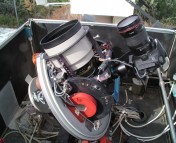This guest post was written by Wen-Hsin Chen, a first-year masters student at National Tsing-Hua University, whose research interests are in instrumentation , developing tools and assembling resources/tools together to reach the best performance. They are also an amateur astronomer and love to go to the mountains at night to get shots of the fascinating sky.
Authors: René Heller, Michael Hippke, Jantje Freudenthal, Kai Rodenbeck, Natalie M. Batalha, and Steve Bryson
First Author’s Institution: Max Planck Institute for Solar System Research
Status: Published in A&A
One of the most successful ways to find exoplanets in a stellar system is by occultation. With this method, we can find planets that coincidentally transit the host star in our line of sight. However, there might be other planets orbiting around the star without transiting it. How are we going to know that they exist?
Transit timing variation (TTV) is one of the ways to find non-transiting planets in the system. In a tightly packed planetary system, gravitational interactions between planets cause acceleration and deceleration of planetary orbits, which leads to a change in the orbital periods of each planet, and a shift in the timing of the transit.
In this paper, the authors applied a transit least-squares (TLS) algorithm on the data of Kepler-160 observed by Kepler and found some interesting results. Kepler-160 (KOI-456) is a Sun-like star hosting two originally known planets, Kepler-160 b and c. This time they found another transiting planet candidate and a non-transiting planet.
The Transit Least-Squares (TLS) Survey
The Transit Least-Squares (TLS) survey aims to find new transiting exoplanets by searching for periodic decreases in the brightness of stars. The transit depth is low for small Earth-sized planets and thus the signal-to-noise ratio would be low, which makes these planets difficult to find using the algorithm usually used in exoplanet transit searches, the box least squares (BLS) algorithm. The TLS algorithm identifies transit-like features while considering stellar limb darkening and planetary ingress and egress, which makes it more reliable than the BLS algorithm when looking for small planets.
New Transiting Candidate in Habitable Zone
After re-analyzing the time-series photometry data of known exoplanet host star Kepler-160, the authors found a new transiting candidate (Figure 1j) with a significant transit depth, a radius of 1.91 Earth radii, and an orbital period of 378 days – very similar to our planet Earth. Kepler-160’s new transit candidate also happens to lie in the habitable zone, which makes it the smallest planet found yet to do so. It’s been predicted to transit again on September 14 2020. If that transit is observed, we can confirm the existence of this planet.

Non-transiting Kepler-160 d Found by TTVs
Kepler-160 c showed large TTV, while planet b did not (Figure 2). The authors wanted to find out what caused this TTV. They conduct several N-body simulations by taking different celestial bodies into account. Neither Kepler-160, planet b nor the new transiting candidate could produce this TTV. Therefore, they claim that there is another non-transiting planet interacting with planet c and causing this timing variation. The newly found Kepler-160 d has a mass between about 1 and 100 Earth masses and an orbital period between about 7 and 50 days. The parameters of planet d could be characterized by further observations of the transit of planet c or from the observations of stellar radial velocity amplitude caused by planet d, which could be done using ground-based telescopes.

With this new algorithm, TLS can help us in finding small transiting planets that were formerly ignored. Let’s get prepared to welcome them to the zoo of exoplanets!
Featured Image Credit: ESO
Edited by Joanna Ramasawmy




